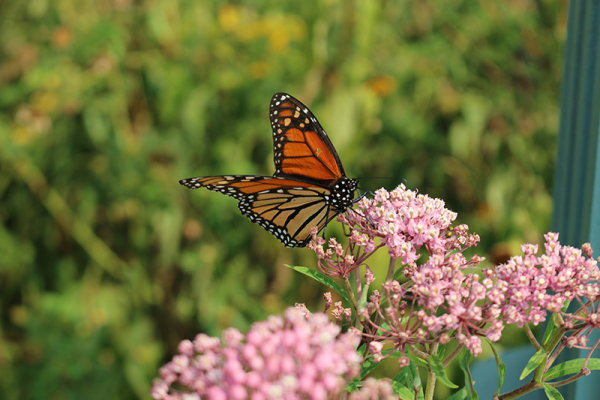There’s something special happening throughout Hudson River Park. Walk through our four miles of waterfront esplanade, and you’ll discover droves of monarch butterflies! Butterflies are a common sight throughout HRPK, but each fall monarch butterflies undertake a continent-spanning annual migration that brings large numbers to our gardens and green spaces. The density and abundance of this year’s migrators is especially spectacular.

The monarch’s journey includes an incredible voyage from areas in the Northeastern United States, including Hudson River Park, over 3,000 miles to Mexico. Because monarchs are not able to survive cold temperatures in the northeast, this migration starts in October with the goal of reaching their overwintering habitat in Mexico, and it can take as many as four generations of butterflies to complete the full journey to and from New York.
Interestingly, during this long voyage the monarchs only fly during the day and therefore need a place to rest, or roost, at night. These overnight roost sites are critical to a successful monarch migration. Sometimes, when temperatures drop, the migrating monarchs cluster together to stay warm at night, with thousands on one tree!
One of the ways that Hudson River Park supports the life cycle of the monarch butterfly is with its Habitat Garden, located between W 26 and W 29 Streets. HRPK’s two-acre Habitat Garden was specifically designed to provide a home for native wildlife species and is an important outdoor classroom site used by Estuary Lab educators to teach local students about NYC native birds and plants.
This garden is also importantly a Certified Monarch Waystation, meaning that it provides milkweed and nectar sources for monarchs. Common milkweed, Asclepias syriaca, plays a crucial role in the life cycle of the butterfly because the monarch caterpillar larvae feed exclusively on milkweed leaves. Monarchs visiting HRPK also enjoy the Park’s flowering nectar plants such as butterfly bush and honeysuckle.

Want to know what’s blooming in the Park? Check out HRPK’s Bloom Alert to discover what’s especially beautiful right now throughout our four miles of beautiful horticulture.